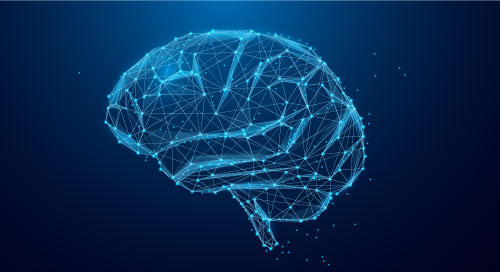Top Tools and Frameworks for AI Developers

AI is disrupting every industry. From enabling data-driven automation to power sustainable smart factories, catching production errors on the manufacturing floor, using robots for e-commerce fulfillment, and even battling wildfires—AI can be found almost everywhere.
Because of this, more and more developers are interested in pursuing or advancing their AI careers. But it can be a scary field to jump into, and many don’t know where to start. While countless number of resources are available out there, we’ve put together a list of the top AI frameworks and tools to help provide developers the necessary building blocks to get started with AI development.
Caffe: Born out of Berkeley AI Research, Caffe is a deep-learning framework designed with a focus on speed and modularity. It is built with an expressive architecture that allows developers to switch between CPU and GPU with a single flag. Its extensive code is meant to promote development. And its speed is perfect for research experiments or industrial applications that need to process millions of images a day. The project also provides developers with tutorials, installation instructions, and step-by-step examples to get started.
Keras: This popular AI framework is a neural network library written in Python. Keras prides itself on making it simple, flexible, and powerful for developers to experiment with machine learning. It reduces cognitive load, minimizes user actions, and clearly indicates error messages during development. You can take advantage of the project’s extensive documentation and developer guides to get started.
MXNet: Currently an Apache Software Foundation incubating project, MXNet is a deep-learning framework well suited for AI research, prototyping, and production. It includes a hybrid front-end that allows developers to mix symbolic and imperative programming to maximize efficiency and productivity. Other features and capabilities are scalable distributed training, support for eight language bindings, and an ecosystem of tools and libraries to extend MXNet use cases.
ONNX: As major technology companies work to make AI more accessible, ONNX makes sure developers can easily interoperate within the AI framework ecosystem. More than a framework, it is an open standard for machine learning interoperability. Developers can work in their preferred framework and inference engine, and ONNX aims to eliminate any implications downstream.
More and more #developers are interested in pursuing or advancing their #AI careers. But it can be a scary field to jump into, and many don’t know where to start: @IntelIoT via @insightdottech
PaddlePaddle: This open-source, deep-learning platform is committed to providing rich AI features for industrial use cases. It is widely adopted in manufacturing, agriculture, and enterprise applications. The platform features support for declarative and imperative programming, large-scale training, multi-terminal and multi-platform deployment, rich algorithms, and pre-training models.
PyTorch: This deep-learning research platform aims to speed up the time it takes to go from prototyping to production. The project provides two high-level features: tensor computation and deep neural networks. It was developed to be deeply integrated into Python. Developers can use it similarly to other popular Python packages such as NumPy, SciPy and scikit-learn. The framework requires minimal overhead to get started and integrates with acceleration libraries like Intel® oneMKL to maximum speed.
OpenCV: The community around this open-source computer vision library aims to make AI easy and fun to work with. The project itself provides more than 2,500 computer vision and machine learning algorithms for developers to get started. The OpenCV team also offers a number of tutorials, courses, and events designed to engage and collaborate with the AI community. Check out its latest AI trivia game show sponsored by Intel® OpenVINO™.
OpenVINO™: The Intel® OpenVINO™ Toolkit is designed for optimizing and deploying AI inference. The company just launched OpenVINO 2022.1—the largest update since the toolkit was first launched. Packed with new features , it’s designed to make AI developers’ lives easier. Key features include expanded natural language processing support, device portability, and better inference performance. Developers can get started quickly with pretrained models from Open Model Zoo. Learn more about the latest release here.
TensorFlow: This end-to-end deep learning platform developed by Google targets both beginner and expert developers. The core library is designed to help developers build and deploy machine learning models. But there are also additional libraries for JavaScript, Mobile and IoT, and production development.
For even more AI development resources, visit the Intel® 30-day AI Developer Challenge and learn how to build AI applications at your own pace. To boost your AI skills even further, consider the Intel® Edge AI Certification program.
This article was edited by Georganne Benesch, Associate Editorial Director for insight.tech.